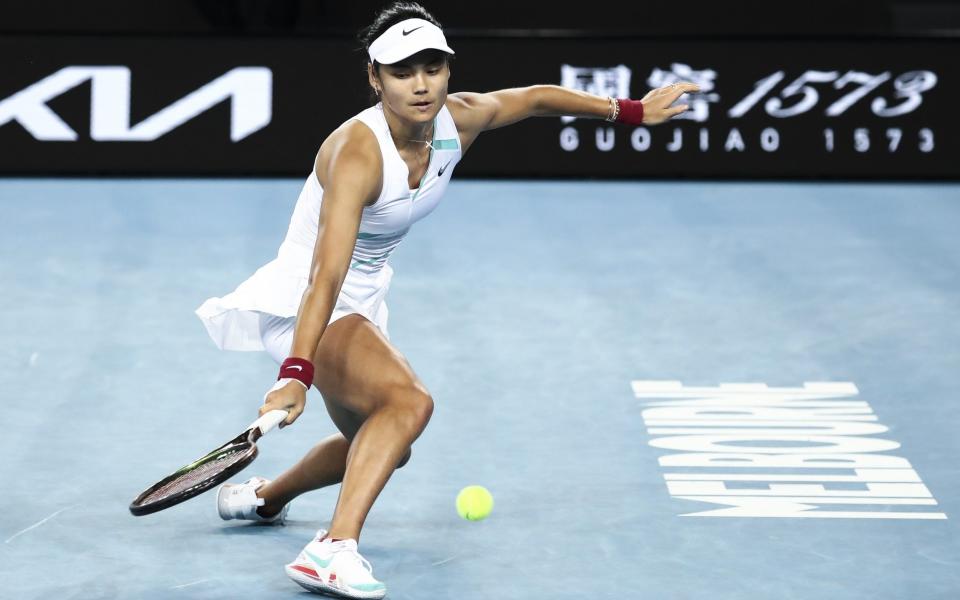'A player's hand is everything' – Emma Raducanu's blister agony explained by Annabel Croft

The news that Emma Raducanu was knocked out of the Australian Open partly due to a blister may have some people rolling their eyes, but tennis experts know it can be game-destroying. The US Open champion had a red-raw blister at the bottom of her ring finger on her racket hand during her second-round match in Melbourne, and Annabel Croft, the former British No 1, described it as a “nightmare” to play through.
“Your fingers are so sensitive to the racket hand, everything works in sync,” Croft said. “So, if you have a tiny bit of pain through the pad of your hand or through the fingers, it will affect how you hit the ball. It’s a nightmare. It can be excruciating to the point that you can’t follow through or, on impact with the ball, it hurts and it ricochets through your hands. It’s obviously connected to your brain as well, so you’re holding back sometimes with hitting it because of the pain that you’re about to feel. A player’s hand is everything.”
Getting the blister taped up offered little solution to Raducanu during the loss to Danka Kovinic, as another former British No 1, Jo Durie, observed. “It changes how you feel your hand on the racket,” she said, commentating for Eurosport. “It’s not the same.” Raducanu, 19, was in an impossible position, and the only option she saw was to play on.

This particular blister had been disrupting her preparations for five days and, as early as the second game against Kovinic, Raducanu was already examining her painful palm in between points, shaking her head. Unable to grip her racket properly due to the discomfort, her serve suffered as she could not generate any pace. Then there was the bigger problem of her forehand, which proved too painful to hit in her usual topspin style. It is one of her main weapons, but, for more than an hour – from midway through the first set, until late in the second – she was unable to put it to work as she gingerly held onto her racket.
Raducanu is not the first player to be hampered by blisters. Croatian player Marin Cilic sobbed during the 2017 Wimbledon final, when he was swept aside by Roger Federer after the blister on his left foot affected his movement. It is something players on tour are constantly managing, particularly on their hands, the notoriously meticulous 20-time major champion Rafael Nadal even opting to tape his fingers and hands every time he steps on court, as a preventative measure.
“If people look at tennis players’ hands, it must be like looking into ballet dancers’ feet – they have all these calluses all the way around the joints of the fingers and in the pad of the hand,” Croft said. “You definitely build up a resistance, but you’re constantly monitoring it. If you look at Nadal’s hands, they are heavily, heavily taped ahead of each match, it’s part of his ritual going on court.”
It is common for the issue to flare up after taking a break from the court, as Raducanu was forced to do after contracting Covid in December. Ahead of this match, she avoided hitting forehands and serves during training to avoid aggravating the blister. But under the lights of the Margaret Court Arena, there was no getting past it. Her tennis IQ, which has been much-lauded since she made her breakthrough at Wimbledon, was pushed to the very limit to find different solutions, including turning to the humble forehand slice. Her resourceful efforts and fighting spirit were big positives to take from the loss.
“This is the grind of tour life,” Croft said. “This is new territory for her. She’s doing everything in reverse: she hit the heights at the beginning [in New York] and she’s going back to her apprenticeship, really. As she said herself, it’s a big learning experience.”

 Yahoo News
Yahoo News 